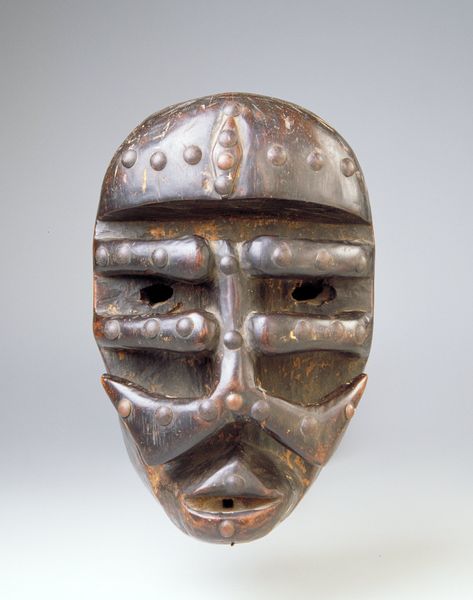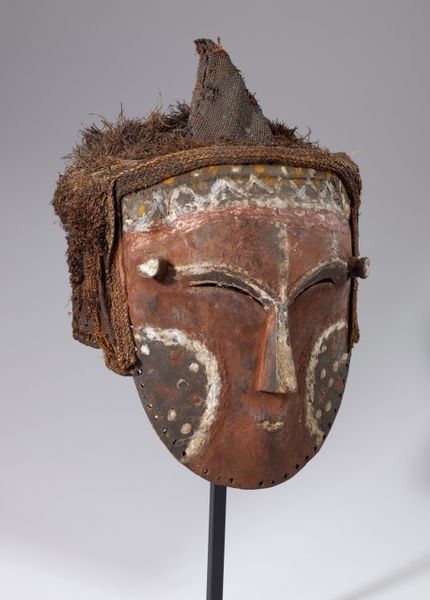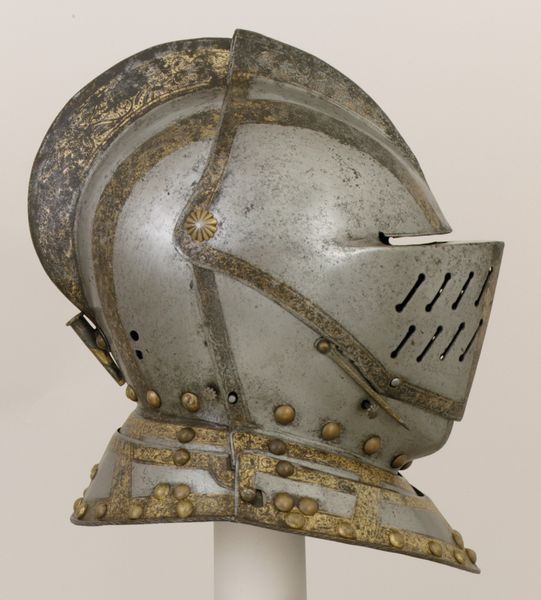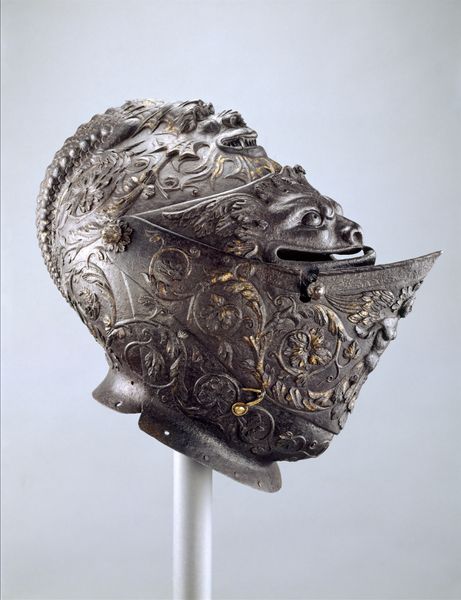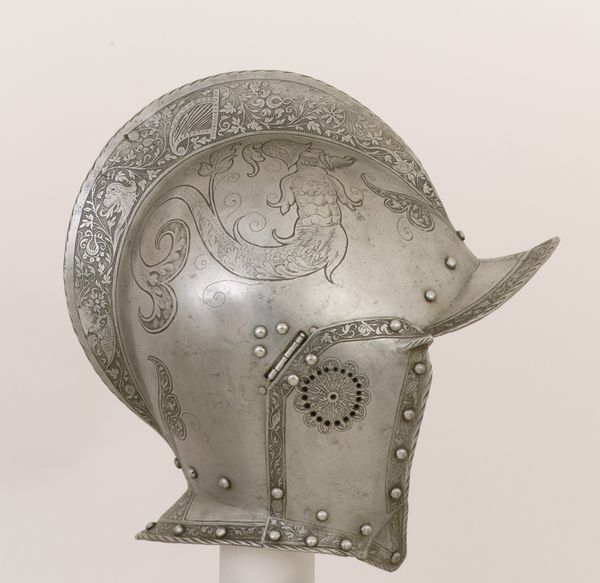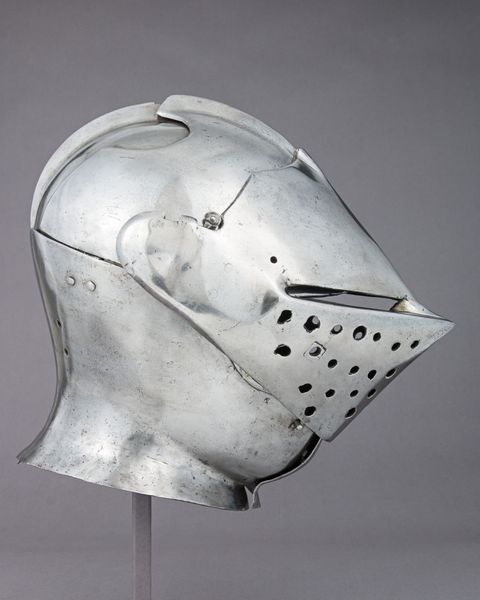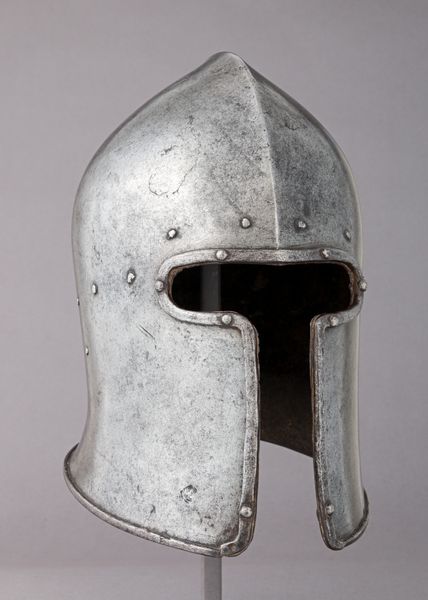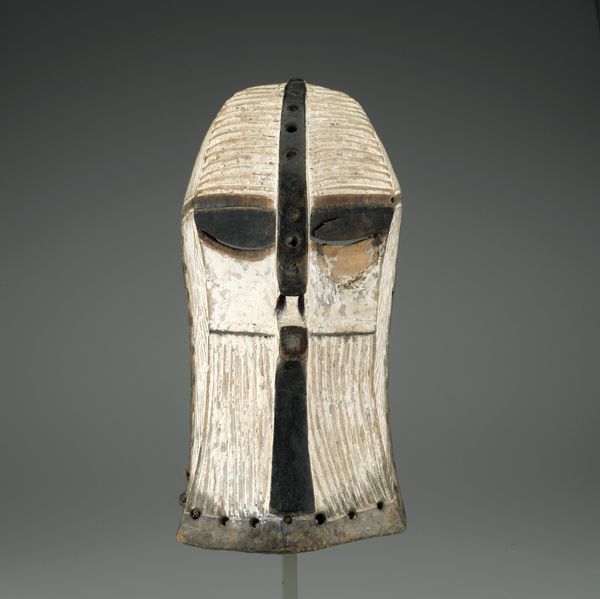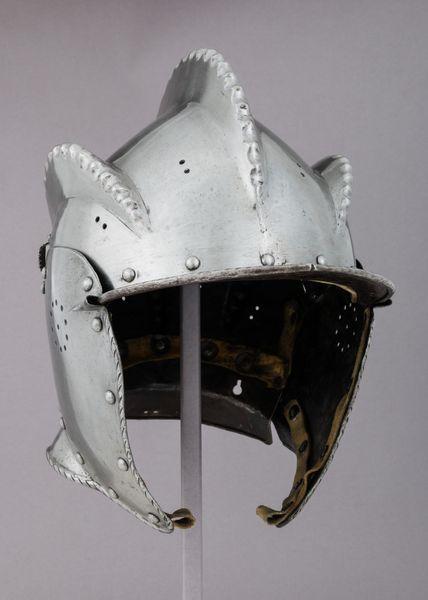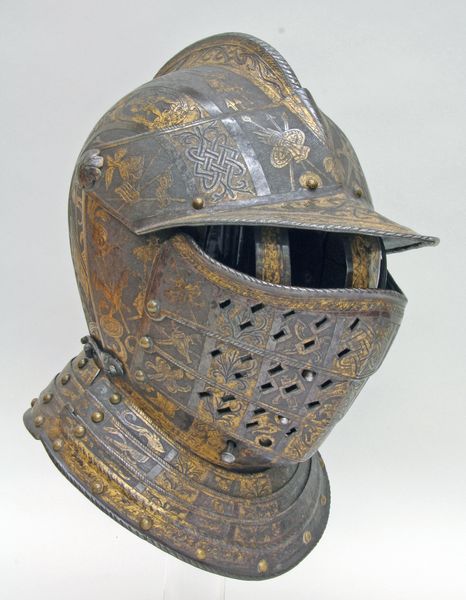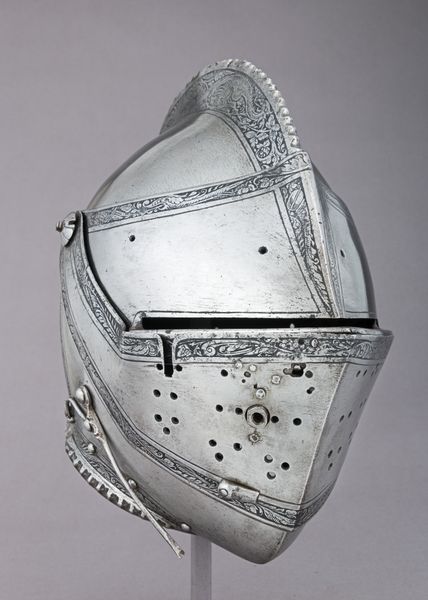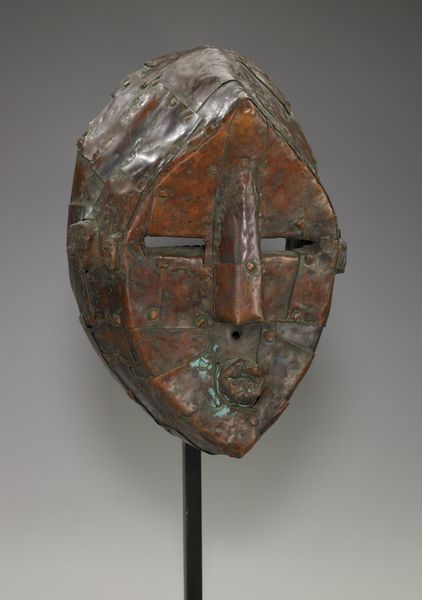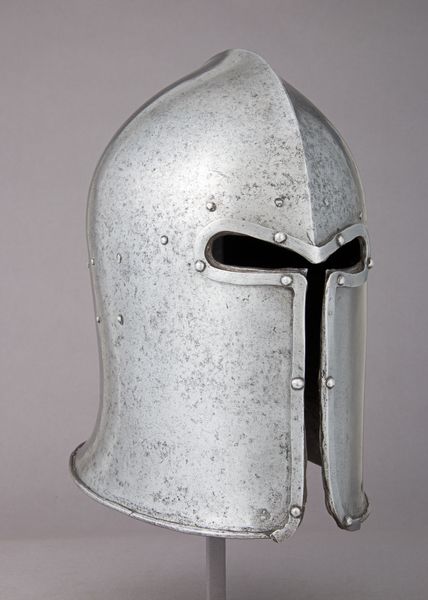
metal, bronze, sculpture
#
metal
#
greek-and-roman-art
#
bronze
#
ancient-mediterranean
#
sculpture
#
armor
Dimensions: 11-13/16 x 7-7/8 x 10-1/2 in. (30.0 x 20.0 x 26.7 cm)
Copyright: Public Domain
Curator: Standing before us is a Corinthian helmet, a bronze sculpture dating back to approximately 540 BC. Editor: There's something strikingly austere about its design. It almost feels more like a ritual mask than functional battle gear, like the bronze has grown to mimic a solemn expression. Curator: Yes, the smooth, almost organic curve evokes both protection and a kind of anonymity, hiding individual identity for something shared, a unified purpose on the battlefield. The very material speaks to ancient bronze-smithing techniques. I’d love to know about the hands and kilns that shaped this thing, and how its creation supported its society's martial pursuits. Editor: And what a cost! Consider all that metal refined to make just one helmet. The value and importance placed on warfare—not just for practicality, but almost imbued with a spiritual power by its bronze construction, its presence almost echoes the faces it hid and protected for so long. Even the openings for the eyes have this eerie echo, evoking Cyclopean gods, while limiting perception in any kind of combat situation! It’s such a striking example of visual symbolism tied directly to conflict. Curator: The symbols may predate a written understanding of a “hero.” Before we can say “Achilles is a hero” maybe helmets like these suggest that *wearing* the trappings of heroic militarism might precede such concepts in the oral and ritual cultures, giving soldiers or fighters a new face by literally hiding theirs behind metal! Editor: Right! It’s the armor that makes the man. Though from my materialist perspective, I also wonder about the wear, how it performed practically and then the recycling, when worn or abandoned on a distant beach… Bronze was valuable after all, and I’d expect a melting down to make more… Curator: An incredible artifact to consider the psychology of warfare, from creation, symbolic purpose and material recycling in ancient Greece. Editor: Agreed, and definitely thought-provoking, showing the interplay of craft, symbolism, and the ancient world's war machine.
